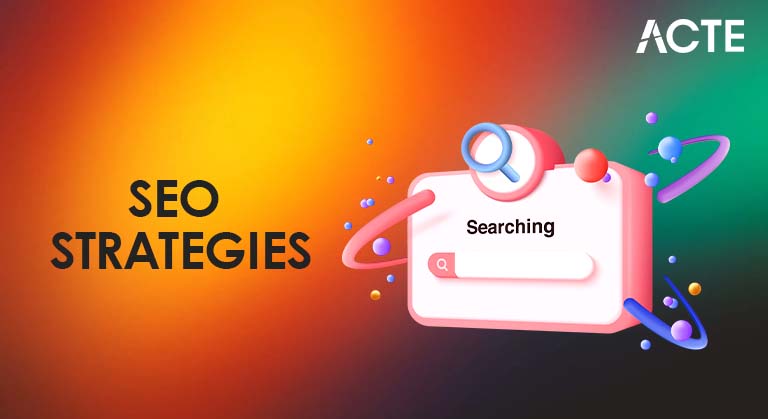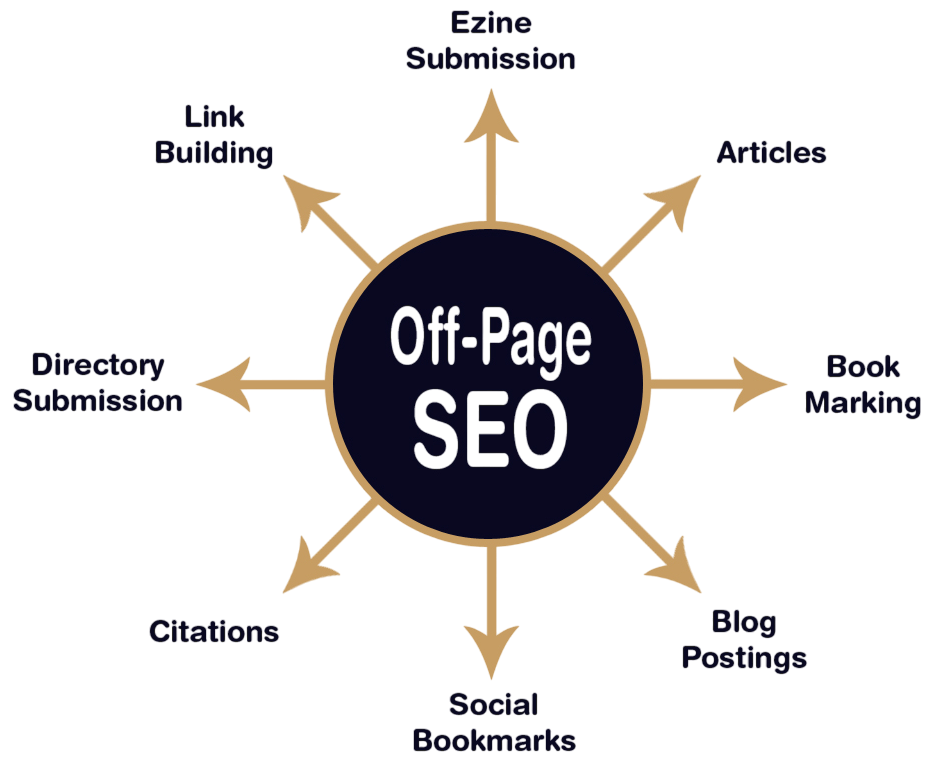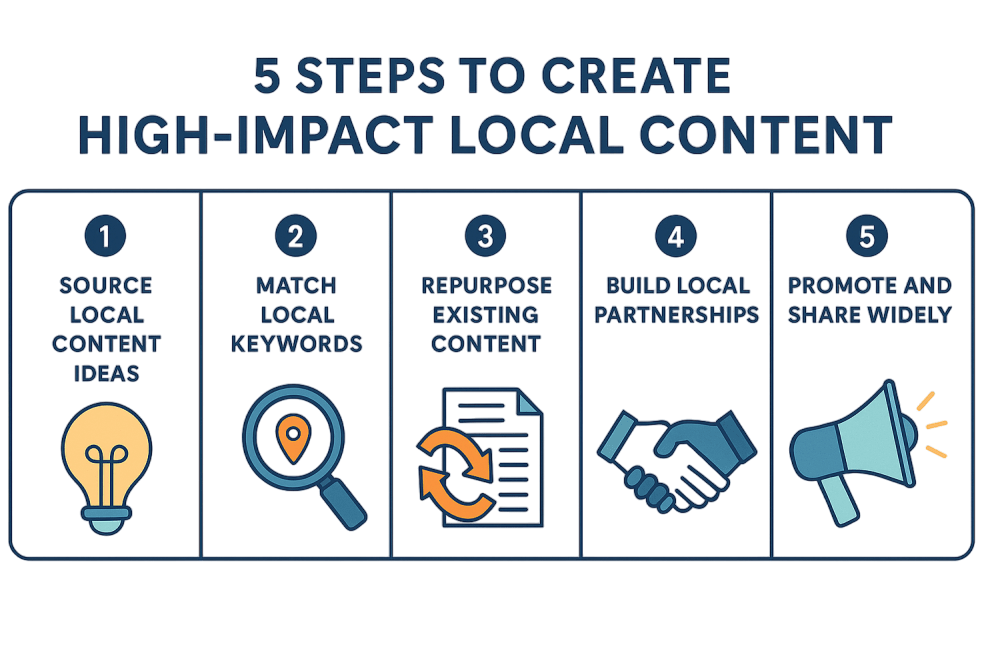
- Introduction to SEO Strategy
- What is an SEO Strategy?
- Why an SEO Strategy Matters
- Core Elements of a Successful SEO Strategy
- Step-by-Step Guide to Creating Your SEO Strategy
- On-Page SEO Tactics
- Off-Page SEO Tactics
- Technical SEO Considerations
- Local SEO Strategy
- Mobile & Voice Search Optimization
- Tools to Support Your SEO Strategy
- Final Thoughts
Introduction to SEO Strategy
Search Engine Optimization (SEO) is not just about inserting keywords into your web pages. It’s a multifaceted, long-term digital marketing discipline that requires a carefully crafted strategy to succeed. With billions of websites competing for attention, your SEO strategy is what gives you a roadmap to stand out, improve rankings, and drive relevant traffic from search engines like Google, Bing, and Yahoo strategic foundations explored in Digital Marketing Training, where learners build expertise in keyword research, technical audits, and content optimization to create sustainable visibility and measurable growth across digital ecosystems. Whether you’re an entrepreneur, a digital marketer, or a content creator, understanding and applying the right SEO strategy will help grow your online presence organically.
Ready to Get Certified in Digital Marketing? Explore the Program Now Digital Marketing Online Training Offered By ACTE Right Now!
What is an SEO Strategy?
An SEO strategy is a structured plan that outlines how you’ll improve your website’s visibility in organic search results to increase traffic, leads, or conversions. It involves keyword research, content planning, on-page and technical optimization, link building, and performance monitoring strategic pillars illustrated in Examples of Successful Rebranding, where case studies reveal how brands like Dunkin’, Survicate, and Old Spice redefined their identity, optimized digital presence, and leveraged SEO frameworks to reconnect with audiences and drive measurable growth. In simple terms, it’s your game plan to rank higher on search engines for queries that matter to your audience.
Why an SEO Strategy Matters
Here’s why having a clear SEO strategy is essential:
- Increases Organic Visibility: Helps your content appear on page one of Google.
- Builds Long-Term Authority: Quality SEO builds trust and credibility with your audience.
- Drives Targeted Traffic: Connects you with people actively searching for what you offer.
- Outperforms Paid Ads Over Time: SEO has long-lasting value compared to short-term ad spend.
- Improves User Experience: Good SEO aligns with fast, user-friendly website design.
- Content Strategy: What topics will you cover, and how often?
- Keyword Research: What search terms will you target?
- Technical SEO: Is your site crawlable and fast-loading?
- Link Building: Who’s linking to you, and why?
- Earn high-authority backlinks
- Get featured in relevant blogs, news sites, and directories
- Maintain active and optimized social media profiles
- Encourage user-generated content and reviews
- Collaborate with influencers in your industry
- Fast (ideally under 2.5 seconds load time)
- Mobile-first
- Secure (HTTPS)
- Indexed correctly
- Structured with schema
- Free of crawl errors or duplicate content
- SEMrush
- Ahrefs
- Moz
- Ubersuggest
- Screaming Frog
- Google Search Console
- GTmetrix
- PageSpeed Insights
- Surfer SEO
- Clearscope
- Grammarly
- Hemingway Editor
- Google Analytics
- Looker Studio (formerly Data Studio)
- RankMath or Yoast (for WordPress SEO)
To Explore Digital Marketing in Depth, Check Out Our Comprehensive Digital Marketing Online Training To Gain Insights From Our Experts!
Core Elements of a Successful SEO Strategy
To build a strong SEO foundation, you need to focus on these four pillars: technical SEO, on-page SEO, content, and off-page SEO core elements reinforced in Content Distribution, where strategic dissemination of optimized content across platforms amplifies visibility, strengthens authority, and ensures that each pillar works in concert to drive sustainable organic growth.
Step-by-Step Guide to Creating Your SEO Strategy
Developing a solid SEO strategy calls for a step-by-step approach that starts with setting clear, measurable goals. These goals might include increasing website traffic, boosting product sales, and improving brand visibility. Success depends on truly understanding your target audience a foundational insight explored in Big Brands Transforming Experience, where companies leverage deep behavioral data, emotional triggers, and market dynamics to craft hyper-personalized experiences that resonate, build loyalty, and differentiate in competitive landscapes. You need to know their search behaviors, key questions, and underlying intent to target your content effectively. Keyword research is crucial at this point. Use tools like Google Keyword Planner and SEMrush to find main and long-tail keywords that match user search habits. A detailed competitive analysis uncovers opportunities by looking at competitors’ keyword rankings and content gaps. Website auditing is also important. Address technical issues like broken links, duplicate content, and performance slowdowns to ensure your website performs well in search engines. Focus on creating high-quality content that is mapped to your keywords. Optimize headers, meta tags, and URLs, and include engaging multimedia elements. Implement strong on-page and technical SEO practices. This includes proper schema markup, mobile responsiveness, and secure HTTPS connections, which are essential for visibility in search engines. Build quality backlinks through guest blogging, digital PR, and partnerships to boost your domain authority. Keep an eye on your performance using analytics tools. This allows for data-driven improvements. Track key performance indicators like keyword rankings, click-through rates, and conversion rates to sustain and enhance your SEO efforts.
Looking to Digital Marketing Training? Discover the Digital Marketing Expert Masters Program Training Course Available at ACTE Now!
On-Page SEO Tactics
On-page SEO is an important strategy for improving web pages to meet both user needs and search engine requirements. By using focus keywords in titles and meta tags, and creating keyword-rich headings (H1, H2), websites can boost their visibility and ranking potential on-page SEO techniques emphasized in Digital Marketing Training, where learners master metadata optimization, header structuring, and keyword placement strategies that improve search engine understanding, enhance click-through rates, and elevate overall site authority. Techniques like adding schema markup for rich results and optimizing content for featured snippets also improve a page’s search performance. It’s equally important to focus on the content’s readability and structure. This can be done through clear formatting, like using concise bullet points and breaking text into short paragraphs. This overall approach makes each webpage attract search engine algorithms while providing a smooth, engaging experience for visitors. This can lead to increased organic traffic and better user interaction.
Off-Page SEO Tactics
This refers to everything you do outside your website to boost search rankings off-page SEO strategies explored in Digital Marketing Certification Process, where learners master backlink acquisition, brand mentions, influencer outreach, and social amplification to build domain authority, increase visibility, and drive organic traffic from external sources.

Preparing for Digital Marketing Job Interviews? Have a Look at Our Blog on Digital Marketing Interview Questions and Answers To Ace Your Interview!
Technical SEO Considerations
Ensure your website is:
Local SEO Strategy
For businesses looking to improve their presence in the local market, a clear plan for digital visibility is essential. Start by claiming and optimizing your Google Business Profile. This is an important first step in local digital marketing. At the same time, make sure your website clearly shows your NAP (Name, Address, Phone) information. This helps establish credibility and improves local search rankings.

To expand your digital reach, actively list in important local directories like Yelp and Yellow Pages. This can greatly increase local discoverability. To build trust and draw in potential customers, encourage reviews from local clients. Positive testimonials can greatly impact consumer choices. Additionally, creating city-specific landing pages with custom content shows your dedication to understanding and serving the local community. This approach fosters a more personalized and engaging online presence that resonates with nearby customers.
Mobile & Voice Search Optimization
In today’s mobile-first digital world, over 60% of searches happen on smartphones. Voice search is also growing quickly. To be visible online, businesses need a smart approach. Using responsive design is important to provide a smooth experience on all devices a principle emphasized in Digital Marketing Experts, where professionals combine mobile-first design, SEO optimization, and UX strategy to ensure websites adapt seamlessly across screens while boosting engagement, accessibility, and search visibility. Optimizing for conversational keywords helps address the specific language people use in search queries. By using structured data, companies can help search engines better understand the context of their content. This can improve search rankings and visibility. Additionally, creating clear and straightforward answers for voice snippets can significantly boost mobile search performance. Using tools to optimize page speed and reduce mobile load times is also vital. Faster websites not only enhance user experience but also improve search engine rankings. This, in turn, drives more organic traffic and engagement.
Tools to Support Your SEO Strategy
Keyword Research & Tracking:
Technical SEO:
Content Optimization:
Analytics & Reporting:
Final Thoughts
Creating a solid SEO strategy is essential if you want to improve your online presence, beat your competitors, and maintain steady traffic over time. This involves combining different elements like thorough keyword research, developing high-quality content, making sure your website runs smoothly, and consistently improving your approach. By bringing these parts together, you can create a strong search presence that supports your business goals and helps you connect with your target audience effectively a strategic foundation emphasized in Digital Marketing Training, where learners master keyword research, content alignment, and cross-channel optimization to drive visibility, attract qualified traffic, and convert engagement into measurable outcomes. It’s important to remember that SEO is a marathon, not a sprint. It requires patience and dedication. Regularly refining your methods is crucial, so stay updated on the latest SEO trends and changes in the industry. Always prioritize your audience and focus on providing value through your content and website. Over time, these efforts will pay off, leading to better search rankings and overall online visibility. Work on building a genuine relationship with your audience, and they will respond with loyalty and engagement.




